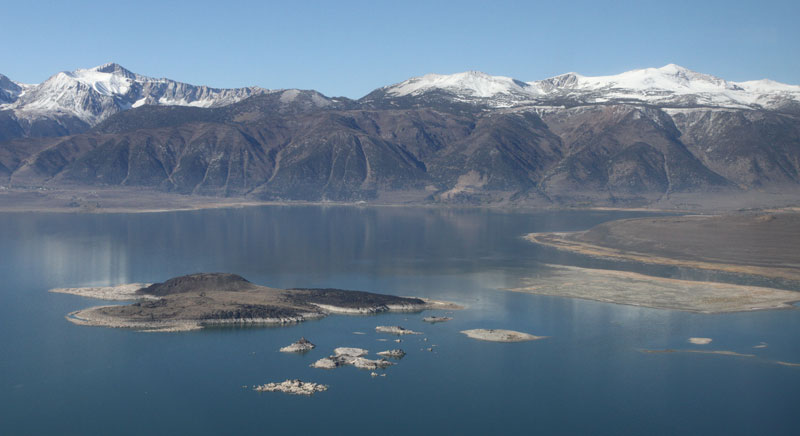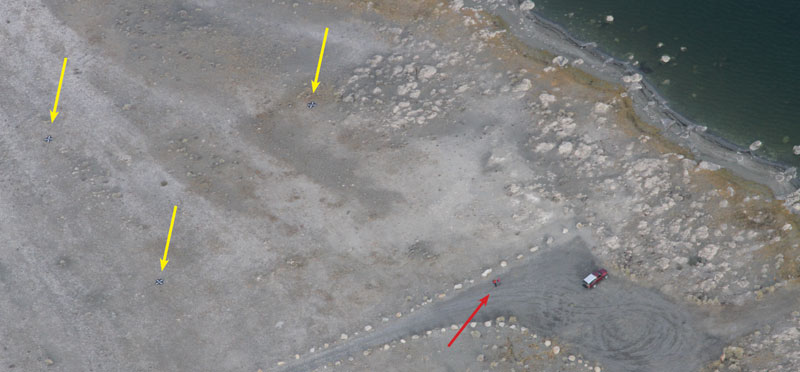
This post was written by Erica Tucker, 2013 Project Specialist.
The Mono Basin Christmas Bird Count on December 19, 2012 recorded just a handful of Eared Grebes on Mono Lake, a shadow of the multitude that passed through during fall migration.

The Mono Lake Committee coordinated the annual aerial photo survey of the grebes last October. Volunteer LightHawk pilot Geoff Pope and volunteer photographer Stephen Ingram spent a morning flying over and photographing Mono Lake’s surface and the birds upon it. All of us have been eagerly awaiting the final results from researcher Sean Boyd of the Pacific Wildlife Research Centre in British Columbia. A drumroll please … Boyd’s counts show that Mono Lake hosted about 1 million Eared Grebes on October 15, 2012.
Boyd was able to calculate the number of grebes by taking the initial count from the photos, converting that number into a density (#/km^2), adjusting it for scale (which we created through three temporary white X markers that were 50 meters apart near the lakeshore), and using the current lake surface area to extrapolate the final count. The exact number of grebes was 1,006,127 +/- about 10–11% Standard Error; more than counted in 2011. The annual aerial Eared Grebe survey has been happening for the past decade, with the exception of a few years, and you can see past years’ grebe counts here.

The Mono Lake Committee is dedicated to assisting with scientific research at Mono Lake, and over the next few years is taking an even greater hands-on role with the Eared Grebe survey. Committee staff this year is learning to count the grebes in the photos, as a backup for Boyd. Our hope is that continued support of research and monitoring allows us to better understand the Mono Basin ecosystem, and how management decisions affect it.
